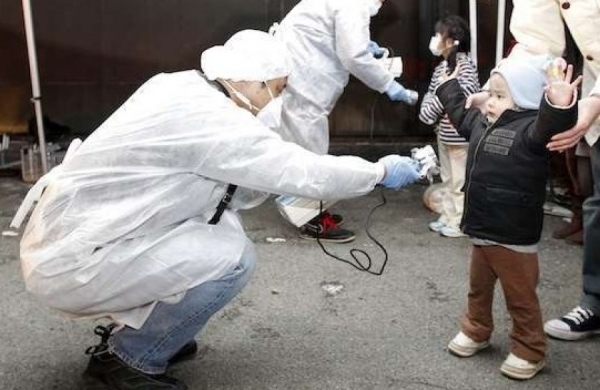Based on abstract mathematical argumentation, without any supporting medical evidence, and without knowing the individual doses of atomic radiation experienced by Japanese citizens living in the region where the Fukushima disaster took place, two international agencies associated with the United Nations — UNSCEAR and WHO — have not hesitated to pronounce that the harmful medical after-effects of the Fukushima disaster will not be “discernible as radiation-caused”.
These agencies are not actually denying that there will be many cancers, leukemias, genetic effects and other diseases caused by the accident in the decades to come, they are simply saying that it is unlikely that anybody will be able to PROVE beyond a reasonable doubt, using statistical methods, that these extra deaths are caused by people’s exposure to radioactivity from the Fukushima Daiichi reactors.
John Gofman, a pioneering nuclear physicist who subsequently became an award-winning medical researcher, has called it the “perfect crime” — you know people are being killed, you know the cause of death, you know the perpetrator, but you can’t actually prove it. And indeed, these two international agencies have done absolutely nothing to help gather the evidence that might have made it possible to prove something — i.e. gathering data on individual exposures, which could have been done — for example, by a systematic collection of baby teeth identified by geological location. The baby teeth would have absorbed strontium-90 and other bone-seeking radionuclides and would have given a rough estimate of radiation exposure to young children as a function of their location.
All radiation-induced illnesses following chronic low-level exposure have a “latency period” measured in years or even decades before the full medical effects are seen in the exposed population. Thyroid cancers have one of the shortest latency periods, especially in young children, so that disease is one of the first things to look for. In Belarus, more than five thousand children had to have their thyroid glands surgically removed following the Chornobyl accident, and in that case the latency period was roughly five years.
In the Fukushima region, childhood thyroid cancers are already so much greater than anticipated that it is difficult to escape the conclusion that these burgeoning cancers are radiation-caused. Ironically, those who put their faith in the hand-waving estimates of UNSCEAR and WHO maintain that a cause-effect relationship cannot be proven in the absence of individual dose measurements. So it is OK, in the absence of evidence, and without individual dose measurements, to conclude that cancers are NOT caused by radiation, but it is NOT OK to conclude that cancers ARE being caused by radiation based on a 20- to 50-fold increase in thyroid cancer, despite no individual dose data?
The United Nations Scientific Committee on the Effects of Atomic Radiation (UNSCEAR) has been sharply criticized by the Nobel Prize-Winning Organization, International Physicians for the Prevention of Nuclear War (IPPNW), for having a biased approach towards the medical consequences of the Fukushima triple meltdown, designed to deny or to minimize the health effects of radioactive emissions from the crippled reactors.
“Alex Rosen of IPPNW-Germany, one of the lead authors of the critique, said UNSCEAR ‘is comprised of delegates from nuclear states with vested interests and a biased view on nuclear energy. Their report on the Fukushima nuclear disaster draws mainly on data from the nuclear industry’s publications rather than from independent sources, omits or misinterprets crucial aspects of radiation exposure and uses questionable assumptions as the basis for its calculations.’ ” See http://tinyurl.com/n9wkqxr .
On the other hand the World Health Organization (WHO) is bound by an agreement signed long ago (1959) with the International Atomic Energy Agency (IAEA) restricting WHO’s ability to conduct studies or publish reports on the health effects observed in populations exposed to atomic radiation from licensed nuclear facilities. Here is an excerpt from the Agreement:
“. . . it is recognized by the World Health Organization that the International Atomic Energy Agency has the primary responsibility for encouraging, assisting and co-ordinating research on, and development and practical application of, atomic energy for peaceful uses throughout the world without prejudice to the right of the World Health Organization to concern itself with promoting, developing, assisting, and co-ordinating international health work, including research, in all its aspects. Whenever either organization proposes to initiate a programme or activity on a subject in which the other organization has or may have a substantial interest, the first party shall consult the other with a view to adjusting the matter by mutual agreement.”
By the way, I spoke about the high thyroid cancer incidence in the Fukushima region on a Canadian TV News show on the Third Anniversary of the disaster: see
The main source of dietary iodine in Japan is through seaweed, not through the ingestion of milk as is the case in European and North American populations. It is likely that this dietary iodine is the cause of the dramatic spike in thyroid cancer cases among Japanese children.










